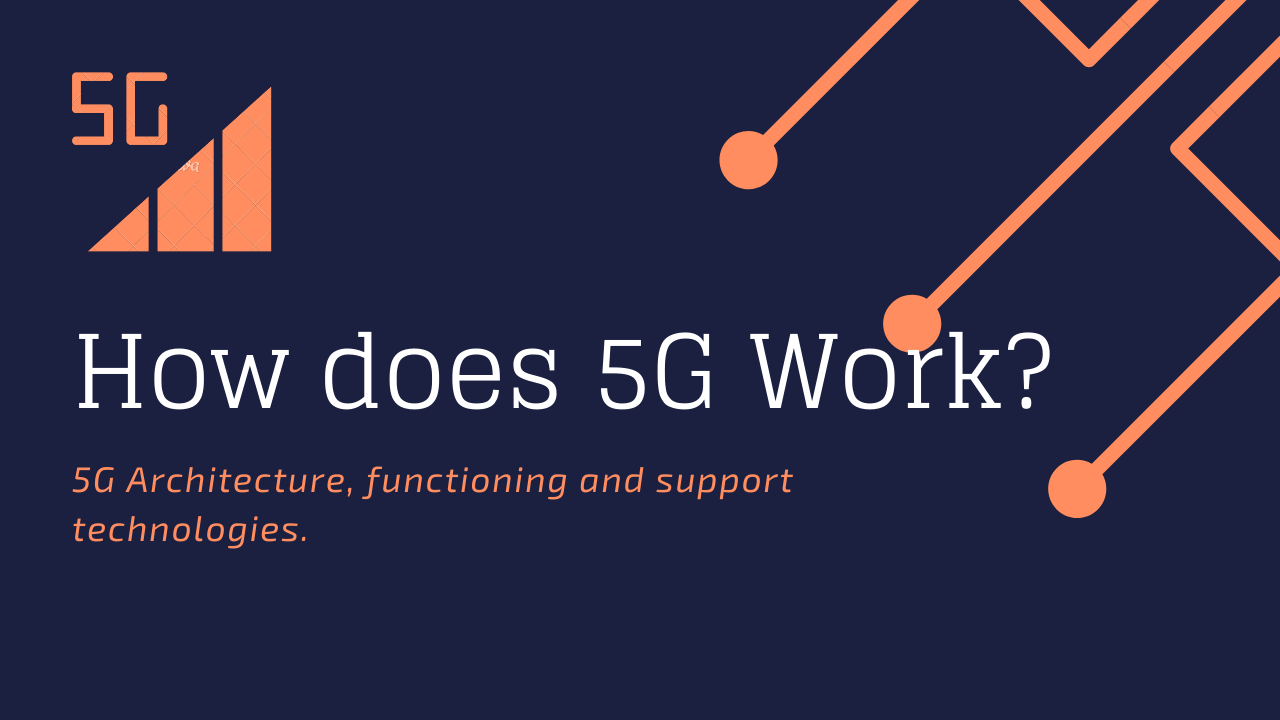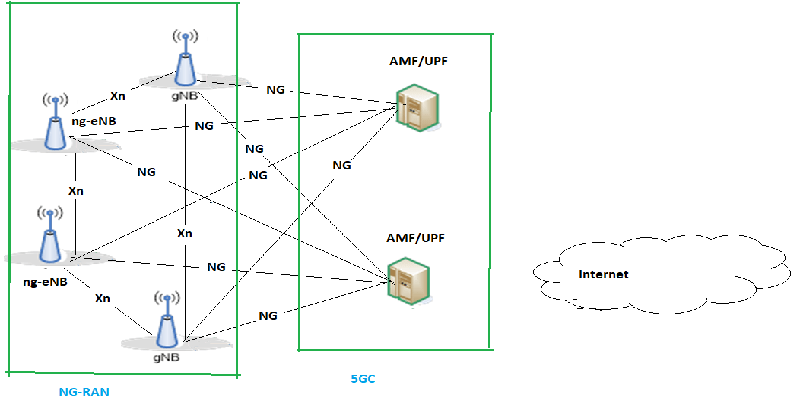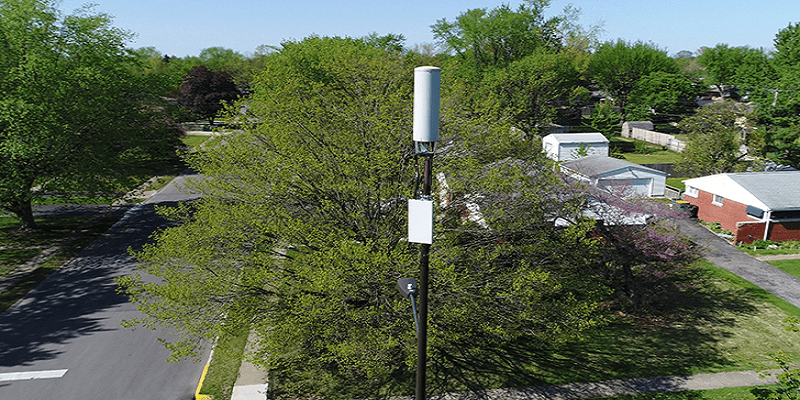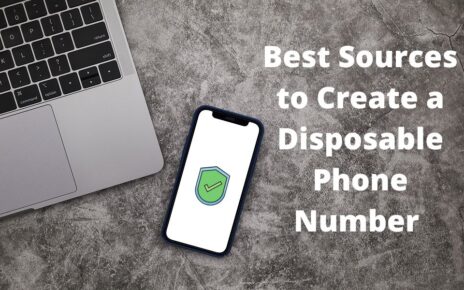5G is the 5th generation of mobile telecommunication technology standards based on high-frequency spectrum and other advanced technologies including mm Waves, Massive MIMO (Multiple Input Multiple Output). Currently, the world is transitioning from 4G to 5G and it is expected to revolutionize not only telecommunication but medical, virtual reality, autonomous driving, and many more fields.
In the 80s era, the first generation of mobile communication started which was based on analog signals with very limited functions. Later, in 1991 2G came into the picture with digital signals which provided many more features than just making phone calls. Since then we have advanced much farther and now, we are at the transition phase of 5G which is making things possible, we could have just imagined as some perpetual fiction.
In this article, you will learn about 5G’s support technologies, 5G network architecture, the functioning of 5G, and some use cases that are transforming the world into an advanced and technology-driven place.
Contents
- 1 How does 5G work?
- 2 5G network architecture?
- 3 5G Spectrum-
- 4 5G Network Latency-
- 5 5G mmWave-
- 6 5G Massive MIMO (Multiple Input Multiple Output)-
- 7 Beamforming in MIMO-
- 8 5G Full-Duplex Communication-
- 9 5G Network Slicing-
- 10 5G Network Function Virtualization (NFV)-
- 11 Comparison between 5G and 4G (5G Vs. 4G)-
- 12 Advantages of 5G-
- 13 Will 4G devices work with 5G technology?
- 14 5G related health concerns and disadvantages-
- 15 Final Thoughts-
How does 5G work?
Like any cellular network, 5G works via a system of interconnected cells communicating using radio waves and connected via network backbone. The only difference is that 5G is using advanced high-frequency radio waves and many new technologies to support its 30% higher speed as compared to its predecessor.
The high speed of 5G is mostly because of high-frequency spectrum mm waves backed by massive MIMO (Multiple Input Multiple Output) data communication technique, network slicing, etc. While 4G technology was using up to 3Ghz frequency, 5G is going to utilize a 30-100 GHz frequency spectrum (mmWave) for data transmission. As per IEE standards, due to high spectrum 5G network data transmission can be up to 100 times faster than 4G.
Low latency, massive MIMO (Multiple Input Multiple Output) technologies, full-duplex and network slicing are the features that make 5G a futuristic and revolutionary telecommunication technology.
To understand the working of 5G you should be aware of the latest 5G Network Architecture. Let’s understand the 5G Architecture and then we will discuss about components and technologies supporting 5G Architecture.

5G network architecture?
5G network and communication architecture is a very complex system. As discussed earlier, 5G uses the high-frequency mm Waves laced with MIMO (Multiple inputs multiple outputs) devices with more number of ports which creates a complex full-duplex system. All these features combined to form a complex system of 5G network communication.
5G network architecture can be divided into two components:
1- Radio Access Network (RAN) –
RAN part of 5G comprises small network cells, 5G specialized antennas, and other supporting components. Small cells play a key role in the 5G network. Small cells of the network are necessary to support the data communication over high frequency and low bandwidth spectrum. These cells also facilitate the Massive MIMO feature of 5G.
2- Core 5G network –
This is the component of 5G network architecture that makes 5G agile and manages network distribution based on the usage group. The main facilitators of the core 5G network are Network Slicing and Network Function Virtualization (NFV).
Read More: How does Internet work?
5G Spectrum-
Electromagnetic Spectrum, also known as spectrum, is a sovereign asset allocated to the telecommunication industries and other bodies in the form of airwaves to facilitate telecommunication and internet activities.
At the beginning of a new telecom generation (for example 5G), Spectrum is allocated to telecom companies as well as other bodies, for example, defense, private telecom channels, etc. Distribution of the Spectrum band is governed by international treaty to avoid the spectrum conflict between neighboring countries. That’s why spectrum allocation takes a lot of time.
Frequency is measured in Hz (Hertz). 1 Hz means one wave cycle completion in one second. Higher frequency leads to faster data transmission.
5G trials have proved its data transmission potential and ultra-fast speed but this cannot be possible without a wide range of the high-frequency spectrum. 5G Network is using Spectrum in three ranges.
1- Low Band 5G Spectrum :
This band of 5G Network works on till 1 GHz frequency. This is the most basic band of 5G networks and is used for basic internet browsing purposes.
2- Mid Band 5G Spectrum:
We have already learned that data transmission speed depends on the frequency of the waves. Mid Band works on 1-6 GHz frequency and it is faster compared to a conventional 4G LTE network (Upto 3 GHz Frequency) because of higher frequency. This range of spectrum provides high speed and lower latency rate however, this Spectrum range fails to penetrate walls and easily gets deflected by poor weather conditions. This requires a higher number of antennas equipped with Massive MIMO (Multiple Input Multiple Output) and Beamforming techniques to support the proper working. We will discuss about it later in this article. Data Transmission speed can be up to 1 Gbps.
3- High Bands Spectrum:
High Band Spectrum in 5G Network operates on above 6 GHz frequency and also known as mmWave (millimeter-wave). This is the highest frequency range among all 5G Spectrum so needless to say that it will be the fastest network slice. This Spectrum will be used for useful autonomous driving, medical, and VR (Virtual Reality) purposes. This spectrum with mmWave can return up to 10 Gbps data transmission speed with the lowest latency rate. This spectrum requires an enormous amount of small cells equipped with low-powered stations and arranged in such a fashion to support beamforming. We will discuss about beamforming later in this article.
5G Network Latency-
Latency is the time taken by a network to transmit the request data signal and return the result. Latency is measured in milliseconds. Networks with low latency are considered as better ones.
The latency term is used in both networks as well as physical storage devices. When we talk about some disk or storage device it is the time that the device takes to return the required data.
4G network Latency is between 30-98 milliseconds while 5G Latency is one millisecond. Mere one-millisecond latency shows how fast 5G network data transmission is.
5G mmWave-
mmWaves or Millimetre Waves are a band of the radio spectrum between 30-300 GHz. mmWaves travel with high frequencies in short and direct wavelengths which are called line-of-sight travel.
High Band Spectrum of 5G mobile network works on mmWaves, which is a 30-90 GHz frequency band while 4G works on a 2-8 GHz frequency band. An increase in frequency ensures a massive increase in data transmission speed.
Due to short wavelength and line-of-sight transmission mmWaves easily get deflected by walls, poor weather conditions, and in some cases very high-frequency waves are attenuated by Oxygen molecules as well. Due to network attenuation in mm Waves 5G requires a huge number of antennas to facilitate seamless signal transmission. That is why with the 5G full implementation there will be a lot of small antennas installed in the streets, electric poles, and rooftops like in the below picture.
5G Massive MIMO (Multiple Input Multiple Output)-
MIMO (Multiple Input Multiple Output) is a telecommunication technology that ensures the simultaneous transmission of input and output data signals to enhance the throughput of the network.
In other words, MIMO is a method for multiplying the capacity of a radio link using multiple transmission and receiving antennas to exploit multipath propagation.
MIMO transmission was introduced in 4G technology having data transmission antennas equipped with 12 ports. Multiple ports in a single antenna are the core function of MIMO.
MIMO is enhanced even more for 5G networks. 5G network antennas are equipped with 100 ports which makes it even more powerful for simultaneous data transmission. That’s why it is termed as Massive MIMO in 5G which works on multiple frequencies on multiple antennas operating simultaneously to increase throughput.
Beamforming in MIMO-
5G is equipped with Massive MIMO technology so there will be a huge amount of signal transmission and reception at the same time. In such cases, there are high chances of self-interference (SI) which will lead to massive information loss. The Beamforming technique is introduced in 5G to alleviate the self interference (SI) issue.
Beamforming is one of the pillar technology of 5G Network. Beamforming, also known as Spatial filtering, is a signal processing technique to minimize the self signal interference in 5G. Beamforming is somewhat similar to using a magnifying lens to concentrate all the light in the same direction at a single point.
5G Full-Duplex Communication-
Full-duplex is bidirectional communication over the same frequency band. Massive MIMO is a full-duplex communication technique.
5G Network Slicing-
Network Slicing is one of the best features of 5G that enables network segmentation based on usage group and enhances the network utilization.
Network Slicing is an architecture to slice network into multiple partitions based on bandwidth, frequency, usage, and many other criteria. Each partition support different application and services. Although they are originated from the same hardware, each partition of the network has its architecture, security, and management.
The purpose of network slicing in 5G is to create an agile network and deploy only the functions that are necessary to a particular set of users or Industries. For example, IOT enabled Autonomous vehicles need high accuracy so they will be allocated the slice with a high-frequency and more secure band.
Read More: What is IoT (Internet of Things)?
5G Network Function Virtualization (NFV)-
Network Functions Virtualization (NFV) is used as a virtualized method to design, deploy, and manage networking services. NFV takes network functions that operate from a hardware base and allows them to run within the software like virtual machines.
It is easier for users to switch mobile devices when there is a network generation upgrade. For example 3G to 4G. But these transitions have never been easier for the telecommunication industry. Bringing new services to the existing set of hardware, towers, installation of new upgraded devices, and cost of all other extravagant activities put a big hole in network industries and manufacturers’ pockets. Network Function Virtualization is to minimize cost.
With the help of programmable hardware and virtual machines, Network Function Virtualization is enabling agile hardware and virtual machines which can be upgraded with new set up updates without much cost.
Comparison between 5G and 4G (5G Vs. 4G)-
With the evolution of 5G technology, things are getting upgraded to a better version. 5G can be costly to implement but the result is beyond the implementation cost. Observe the table below to analyze the difference between 5G and its predecessor 4G.
Advantages of 5G-
Having 5G in neighborhood might be huge benefit for your regular movie nights and fast gaming but there are a lot of benefits that you might not be aware of. Here is the list of few futuristic use cases which can be implemented using 5G.
1- High Speed Internet Surfing and Downloading:
Internet surfing is downloading and sending data. If data transmission is fast then a movies can be watched without buffering, there will not be any lag in gaming like PUBG. 5G is expected to to have more that 1 Gbps download speed.
2- Virtual Reality (VR) Surgeries:
You must have tried VR devices to watch some Virtual Reality video or to play games but with the ultra-high-speed network, it would be possible to perform surgeries without being present in the operation theater. VR Surgery requires huge accuracy and even a small lag in the network could be fatal. 5G network speed more than 1 Gbps will be fast enough to perform medical surgeries using the VR method.
3- Self Driving Cars:
There has been extensive research on Autonomous Cars but we still there is no fully working self-driving car in the market yet. 5G is going to make it possible. As per CNET article, “C-V2X, a communications technology using the same 5G networks coming to our phones, will allow vehicles to communicate wirelessly with each other, with traffic signals and with other roadside gear, improving both functionality and safety.”
4- Advancement in IoT fields:
IoT (Internet of Things) is a field which required accurate data communication between hardware and other networking component. Since 5G is much faster than 4G, it will allow IoT devices to communicate and share data faster than ever. This progress will lead to more research in the field of IoT.
5- Network Slicing:
Network Slicing is one of the best feature of 5G. With network slicing, it will be easier for operators to allocate relevant segment of the network to the user and security groups. For example Autonomous vehicles might get higher speed and secure connection while in other hand regular user will receive a little bit slower slice of network.
Will 4G devices work with 5G technology?
The straightforward answer to this question is no. Because 4G device hardware is not capable to process complex operations and doesn’t operate on the latest 5G network technologies like network slicing, high-frequency data communication, etc.
However, 5G is a very complex system to install. It will take at least 5 years to operate with full potential. Currently, South Korea, USA, China, and few European Countries are using 5G on an experimental basis and even they are not fully equipped with this technology. During this transition 4G, 3G and 2G will be fully functional and all the old devices will keep working as usual.
While companies from countries such as the United States, South Korea, and China are competing to be the first to deliver 5G to the consumer, the health and environmental impacts of the new network are being overlooked.
While 5G has all the good qualities there are some concerns raised by medical experts regarding the effect of high-frequency radiation on the body. Experts believe that only ionizing radiation can be harmful to human beings and may cause cancer-like disease. You can see that the 5G spectrum (30-100 GHz) comes under the non-ionizing radiation category. Usually, Ultra-Violet, X-Rays, and different kinds of Gamma Rays lie in ionizing radiation category which is harmful.
However, 5G network radiation lies in the Micro-Waves category which is non-ionizing light but still can cause a burning sensation if exposed in the radiation. Micro-Wave radiation causes the same effect on the human tissues as a Micro-Wave oven does to the food. There have been multiple researches to prove that 5G radiation can even alter brain metabolism, DNA damage, and create high Cancer Risk.
As per the IEEE spectrum research paper on 5G radiation impact on the human body, “the only known biological impact of RF on humans is heating tissue. Excessive exposure to RF causes a person’s entire body to overheat to dangerous levels. Local exposure can damage skin tissue or corneas.”
Few people around the world believe that COVID-19 is the result of the 5G network which is a complete myth.
Final Thoughts-
5G is all about speed and transformation from 4G to a robust and agile telecommunication system. There is a heavy implementation cost but features of 5G mobile communication like Network Function Virtualization, network segmentation will save much more costs in the future.
5G is important because it will initiate the actual era of Autonomous Cars, Virtual Reality, Augmented Reality communication, and much more beyond our current imagination.
However, there should be proper research on its bad effects on humans and the planet earth to ensure the safe usage of 5G.
Hopefully, you must have learned about 5G technology architecture, related new concepts, and few of the use cases. In case you have any questions feel free to comment or use our “Ask Us” platform to post your question or initiate a discussion.













magnificent points altogether, you simply won a new reader. What could you recommend in regards to your post that you just made a few days ago? Any certain?|
Thank you for your encouraging words 🙂
i love this appropriate post
Everything is very open with a very clear description of the challenges. It was really informative. Your site is very useful. Thank you for sharing. Melamie Orv Helenka
Its like you learn my mind! You appear to know so much about this, like you wrote the e book in it or something. I believe that you simply could do with some percent to pressure the message house a bit, however other than that, that is wonderful blog. A great read. I will certainly be back.
Very nice write-up. I certainly love this site. Stick with it!
I always emailed this weblog post page to all my friends, because if like to read it next my friends will too.
I am regular visitor, how are you everybody? This paragraph posted at this website is truly good. Siouxie Vladamir Strader
Perfectly pent content material, Really enjoyed reading.
I am really loving the theme/design of your blog. Do you ever run into any web browser
compatibility problems? A handful of my blog audience have complained about my blog
not operating correctly in Explorer but looks great in Firefox.
Do you have any solutions to help fix this problem?
Amazing! Its truly awesome article, I have
got much clear idea on the topic of from this paragraph.
Do you mind if I quote a couple of your articles as long as I
provide credit and sources back to your website?
My blog is in the very same niche as yours and my users would definitely benefit from some of the information you present here.
Please let me know if this alright with you. Thank you!
Fantastic blog! Do you have any suggestions for aspiring writers?
I’m planning to start my own website soon but I’m a little lost on everything.
Would you suggest starting with a free platform like WordPress or go for a paid option? There
are so many options out there that I’m totally confused ..
Any ideas? Thanks a lot!